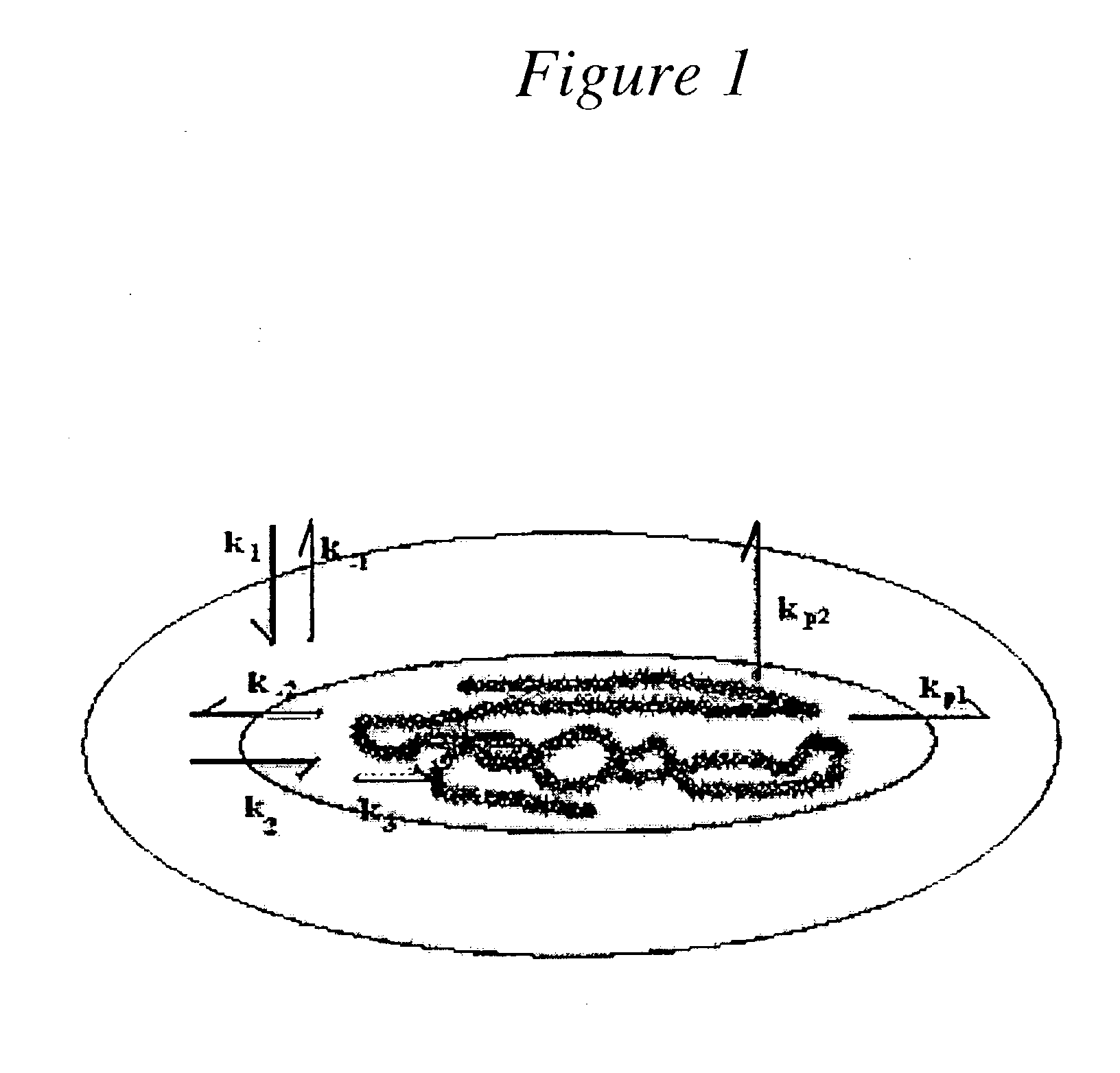Methods for screening for AcrAB efflux pump inhibitors
a technology of efflux pump and inhibitor, which is applied in the field of antimicrobial agents, can solve the problems of time-consuming method, inability to conduct kinetic time course studies, and inability to provide specific and detailed information about the function of the efflux pump
- Summary
- Abstract
- Description
- Claims
- Application Information
AI Technical Summary
Benefits of technology
Problems solved by technology
Method used
Image
Examples
example 1
Construction of waaP Mutants.
[0077] To overcome the outer membrane barrier and facilitate the entry of putative efflux pump inhibitors into the intended screening strain(s) of E. coli, mutants carrying in-frame deletion of the waaP gene were constructed from E. coli AG100 and derivatives (i.e. AG100 ΔacrAB or AG100 ΔacrAB ΔacrEF ΔemrE ΔemrD).
[0078] The method of Link et al (Link et al., (1997) J. Bacteriol. 179(20), 6228-37) was used for construction of waaP mutants of E. coli, again using PCR to amplify sequences 5′ and 3′ to the deletion endpoints in waaP followed by their cloning into the gene replacement vector pK03. Sequence 5′ to waaP were amplified with primers (designed using the E. coli genome sequence database—GenBank accession number AE000400) waap1xz SEQ ID NO: 59 (5′-ATTCGGATCCTAAGATGCCTGGCCTGGATG-3′; BamHI site bold; anneals 854-835 bp upstream of the waaP start codon) and waap2xz SEQ ID NO:60 (5′-TCACGAATTCACGACGAGTCTCCAGTTCAC-3′; EcoRI site bold; anneals 108-89 bp...
example 2
Construction of ΔacrAB, ΔacrEF, ΔemrE, ΔemrD E. coli Strain (Δquad)
General Strategy
[0080] The acrAB, acrEF, emrE, and emrD loci were targeted for disruption with the subsequent reconstitution of acrAB expression (although the quadruple deleted strain which does not express acrAB is a useful control). A strain lacking acrAB acrEF, emrE, and emrD (dubbed XZL992) was ultimately constructed and shown to be both ethidium bromide susceptible and to lack ethidium bromide efflux activity. The acrAB genes were then engineered into this strain on plasmids permitting either constitutive (pXZL) or inducible (pXZL962) high-level expression of the genes. Expression of acrAB was subsequently confirmed and shown to promote enhanced resistance to and exclusion of ethidium bromide. These strains, thus, promoted acrAB-specific ethidium bromide efflux.
[0081]E. coli possess multiple efflux systems able to accomplish active efflux of ethidium bromide, including AcrEF, AcrAB, EmrE, EmrD. The method o...
example 3
Construction of ΔemrE. ΔemrD Mutants in an ΔacrAB ΔacrEF Background
[0084] The method of Link et al (J. Bacteriol 0.1997) was used for construction of markerless emrE, emrD, deletion mutants of E. coli. Briefly, PCR was used to amplify sequences 5′ and 3′ to the region to be deleted in each gene, using chromosomal DNA of E. coli AG100AX as template. Primer pairs (2) for each gene deletion were designed using the E. coli genome sequence database (emrE from GenBank accession number AE000160; emrD from GenBank accession number AE000445).
[0085] Sequence 5′ to emrE was amplified using primers emre1xz (SEQ ID NO:48) (5′-AATTIGGATCCGCCAACACTGCGACAGCGT-3′; BamHI site bold; erme1xz: anneals to 1044-1023 bp upstream of the emrE start codon) and emre2xz (SEQ ID NO:47) (5′-ACTTGAATTCATTAAGGTTGTACCAATGAC-3′; EcoRI site bold; anneals 65-43 bp downstream of the emrE start codon) while sequence 3′ to this gene were amplified with primers enire3xz (SEQ ID NO:40) (5′-ACTGGAATTCACGAAGCACACCACATTAA-3...
PUM
| Property | Measurement | Unit |
|---|---|---|
| length | aaaaa | aaaaa |
| pH | aaaaa | aaaaa |
| temperature | aaaaa | aaaaa |
Abstract
Description
Claims
Application Information
 Login to View More
Login to View More - R&D
- Intellectual Property
- Life Sciences
- Materials
- Tech Scout
- Unparalleled Data Quality
- Higher Quality Content
- 60% Fewer Hallucinations
Browse by: Latest US Patents, China's latest patents, Technical Efficacy Thesaurus, Application Domain, Technology Topic, Popular Technical Reports.
© 2025 PatSnap. All rights reserved.Legal|Privacy policy|Modern Slavery Act Transparency Statement|Sitemap|About US| Contact US: help@patsnap.com



